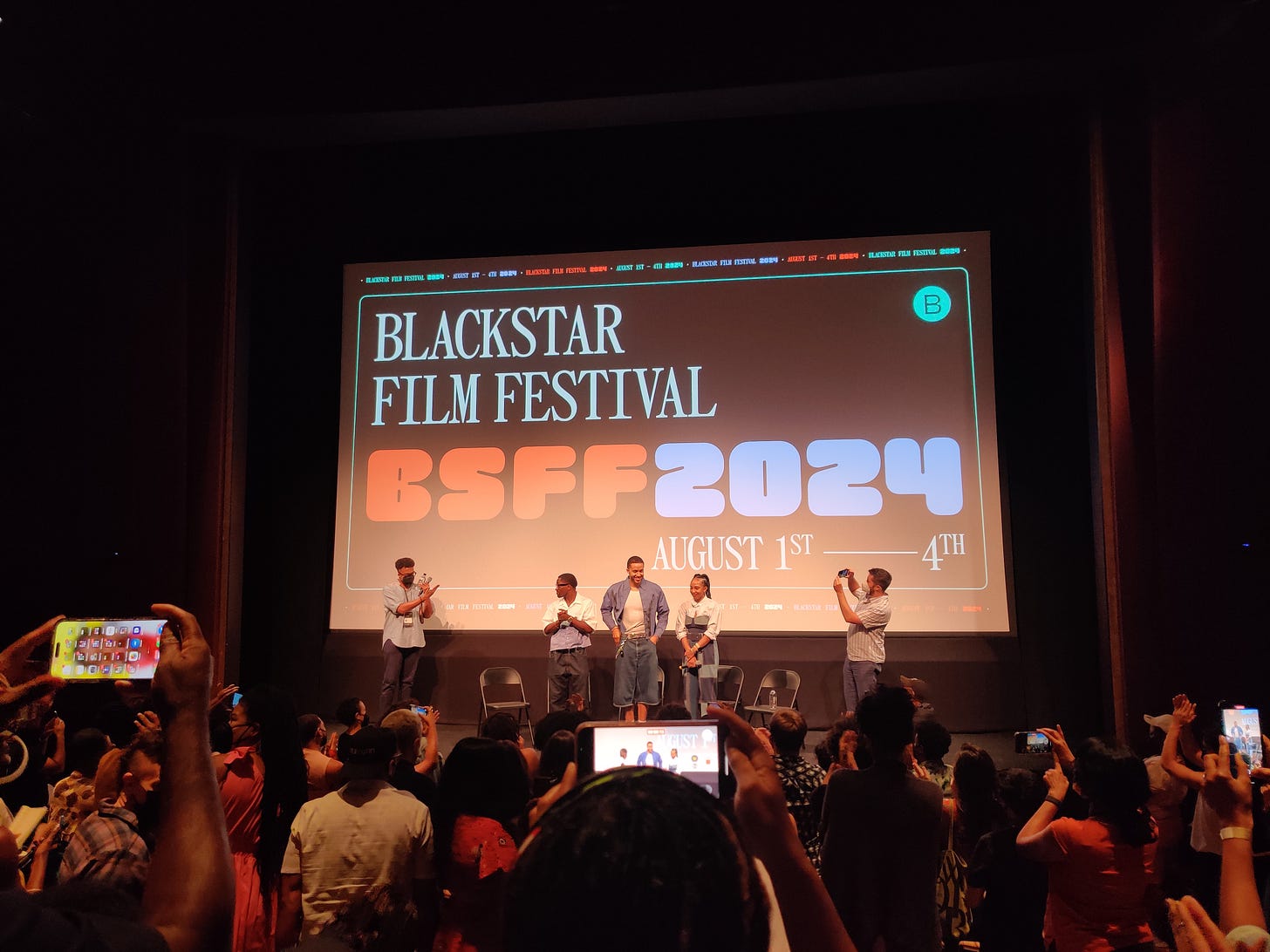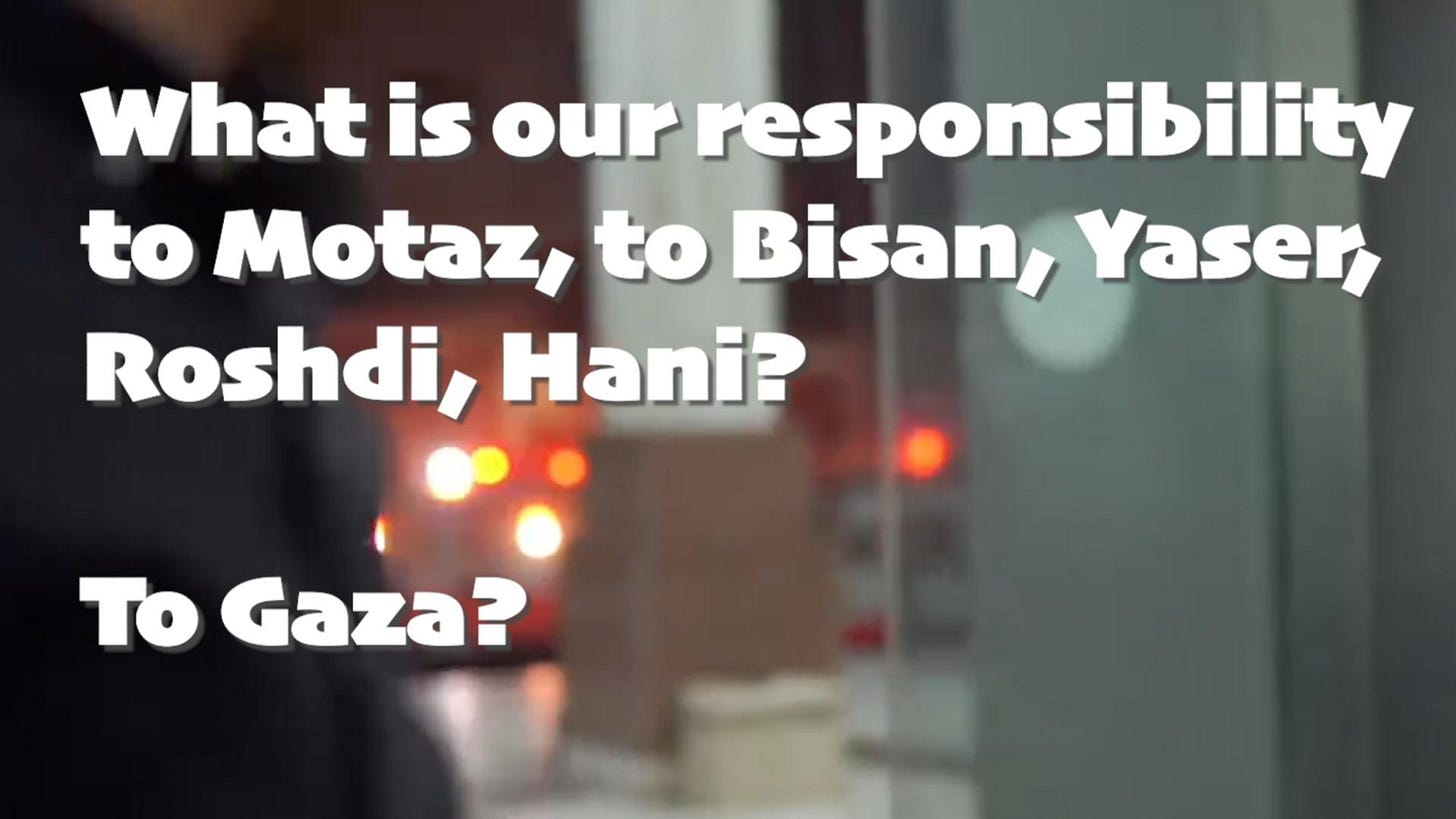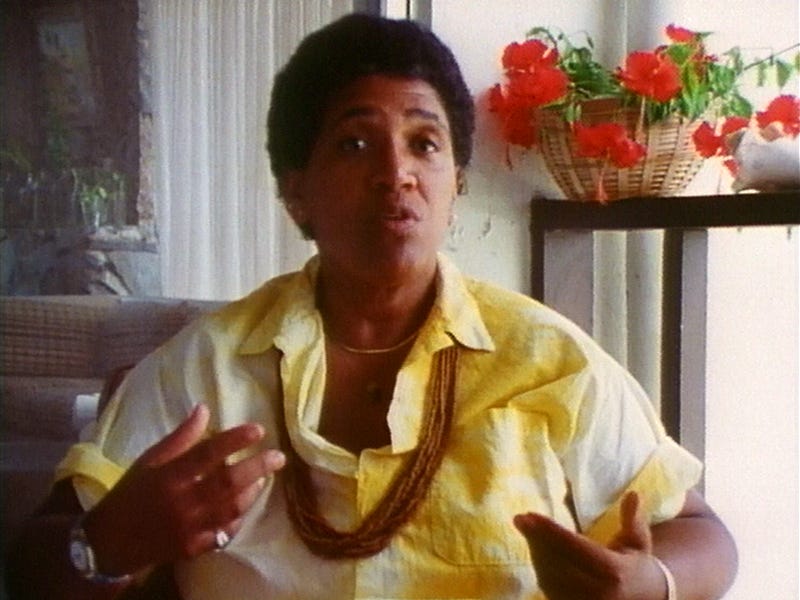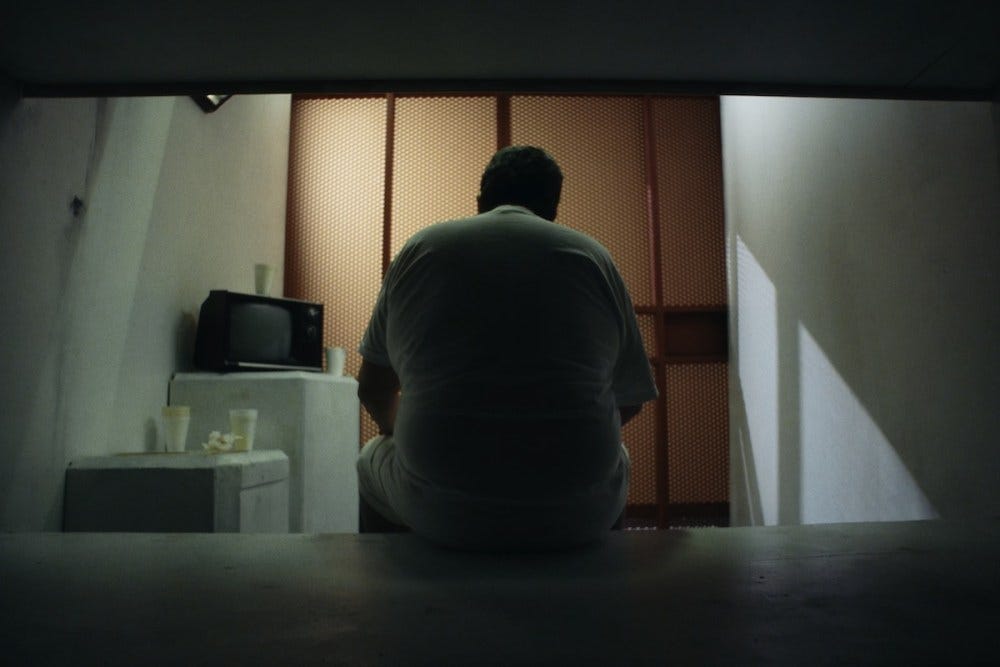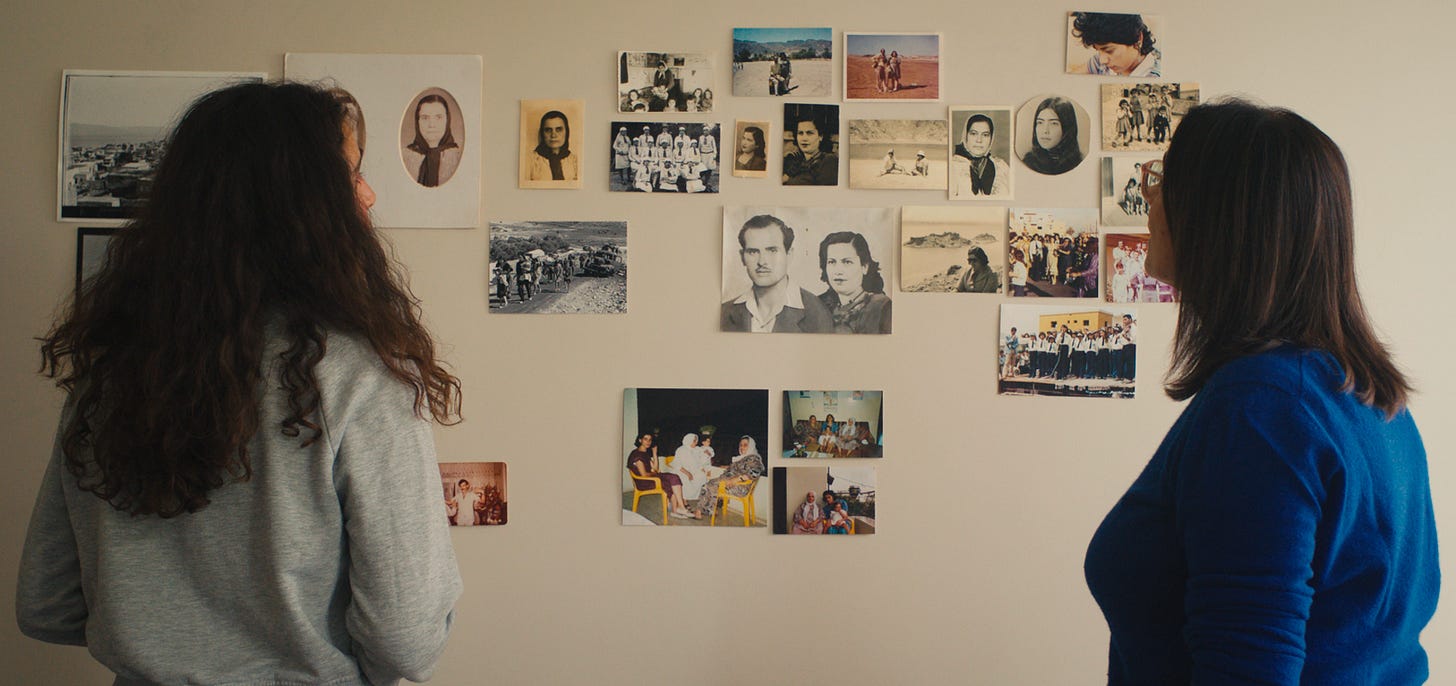I saw about 35 films (including both features and shorts) at this year’s Blackstar Film Festival, the Philadelphia-based festival that features films exclusively from BIPOC filmmakers. Now in its 12th year, it’s described as the “Black Sundance,” and has definitely emerged as a huge networking hub. I’ve been going to Blackstar since first moving to Philly in 2019, and was lucky to see so many films in a four-day period. I was excited to see the line between documentary and fiction increasingly blurred, especially compared to previous years. (This uneasy-but-productive blending of fact and fiction is a big part of my forthcoming book, and it’s fun to see this tendency manifest increasingly in contemporary films!) Here are my very favorites.
You Don’t Have to Go Home, but… by Aidan Un (feature doc)
A few years ago, I was blown away by T T the Artist’s Dark City Beneath the Beat, a viscerally affective and incredibly fun documentary on the Baltimore club scene. I saw that film first virtually during Blackstar’s COVID year (famously, and embarrassingly, spending about an hour trying to Shazam the song playing over the ending credits), before rewatching it several times including when it hit Netflix a few years later. I’ve been waiting for a film that struck the same chords, and Aidan Un’s You Don’t Have to Go Home, but… was the closest thing I’ve seen at Blackstar: fun, upbeat, experimental, joyful, and a true love letter to Philadelphia. The film is a veritable city symphony through the documentation of the Philly dance community, especially break-dancing. Especially timely given the embarrassing meme-ification of bad break-dancing during the Paris Olympics!
Songs from the Hole by Contessa Gayles (feature doc)
The image above is from the standing ovation following the screening of this great film, so you don’t have to take my word for it! The film won Blackstar’s Jury Prize, and I’ve never seen a film more deserving. (I’m currently planning on bringing Contessa Gayles back to Philly for another screening of this film, with a date tentatively set for Nov 12, 12-3 PM— mark your calendars!) The film is a collaboration with James “JJ 88” Jacobs, created while he was imprisoned in solitary confinement. It is a “documentary visual album,” and the film interweaves extremely poetic re-enactments with James Jacobs’s voiceover and music videos for the songs he created while in “the hole.” My favorite element of this film is the text that introduces the treatment and script created for the film itself in Jacobs’s own handwriting, which always reminds the audience that they are watching something crafted. The film is rooted thematically in the idea of redemption, and indeed the film is incredibly spiritual and moving, without being prescriptive or cloying in any way. It is fantastic and deserves all the accolades. Watch this space!
“Mahdi Amel in Gaza” by Mary Jirmanus Saba and Tareq Rantisi (short doc)
What I love about this short, one of many films about Palestine at Blackstar this year, is its ability to be staunchly pro-Palestinian while also being anti-nationalist and explicitly Marxist. Blackstar tends to have few explicitly militantly leftist films; this is not a fault of the festival itself, but rather that there are just very few explicitly militantly leftist films, at all. This experimental short reflected on the work of Mahdi Amel, known as the “Arab Gramsci,” but through poetic and deeply abstract means. I was stunned and enraptured. This, I thought, is the complexity of thought missing in much of solidarity movements today! (a story, perhaps, for another time…)
“A Stone’s Throw” by Razan AlSalah (short doc)
Similar to the previous short, this experimental film, also about Palestine, juxtaposes computer-generated images of an isolated island exclusively for (male) oil workers in the Gulf with images from and around Palestine. There is very little exposition or voiceover and generally the film is incredibly abstract, allowing the viewer to draw their own connections between capitalism and Zionism. This, I think, is incredibly effective, and again, deeply poetic. My favorite element is the inclusion of code-like text on screen, showing the created-ness of the medium, and blending the technological and human words into profoundly political poetry.
A Litany for Survival: the Life and Work of Audre Lorde, by Ada Gay Griffin and Michelle Parkerson (feature doc)
This is one of the few films in the fest that is not contemporary; in fact it was completed in 1995, several years after the death of Audre Lorde. The film was one of the few (perhaps only?) film at Blackstar that had a decidedly different texture. The cinematographer was Arthur Jafa, who also shot Julie Dash’s gorgeous Daughters of the Dust— and in fact for a documentary in the 90s, the cinematography is incredibly impressive. It is mostly composed of talking head interviews, B-roll, and archival footage, which has become incredibly conventional thanks to HBO and Netflix docs. Thankfully Audre Lorde is so captivating to watch on camera that I was easily able to put aside my elitist tendency to praise experimental docs above all else.
The Strike by JoeBill Muñoz and Lucas Guilkey (feature doc)
This is another film from the fest whose generally “conventional” characteristics I was able to overlook because the content is just so fascinating. The film details the Pelican Bay Prison’s hunger strike in 2011, which inspired a statewide prison hunger strike with the participation of 30,000 people. The film details the cruelty of Pelican Bay, a prison entirely composed of solitary confinement units, and the arbitrary nature of punishment: anyone suspected of being in a prison gang can be sent to solitary confinement in California in perpetuity, even without any definitive proof (which can be as abstract as a doodle of an Aztec god, for instance). The film is not explicitly militant in its abolitionist politics, but instead zeroes in on the cruelty of solitary confinement in particular— a great first step and thus a fantastic film to show your liberal-leaning relatives who still haven’t explicitly leaned in the direction of complete and total prison abolition. It will air on PBS on April 25, 2025, so please check it out then if not earlier!
Bye Bye Tiberias by Lina Soualem (feature doc)
Another entry into the poetic films about Palestine canon, but this one a series of interviews with world-famous Palestinian-French actress Hiam Abbass, conducted by her daughter, the director of the film. The film traces Abbass’s journey from a (self-described) “stifling” household, raised in occupied territories and far from her ancestral homeland on the shores of Lake Tiberias. The film is visually fascinating in its heavy use of archival materials from the early 1990s, as Hiam Abbass watches herself as a young woman: the prodigal daughter returned from life abroad, yet now a Westerner and actress who has fallen in love with an Englishman. The film is fascinating and commendable in its complexity: it is staunchly pro-Palestinian, of course, but Abbass’s family is also shown as oppressive. I watched it knowing that I would absolutely flee, too, in Abbass’s shoes. Yet I left wondering if this complexity was lost on her daughter Lina, who seems to spend the bulk of the film berating her mother for leaving her ancestral homeland, despite ample (video!) evidence of the pain living in an occupied village brought her?
“Planetwalker,” formerly titled “A Symphony of Tiny Lights” by Dominic Gill and Nadia Gill (short doc)
John Francis, a peace-loving Black hippie and activist, took a vow of silence after watching the effects of a devastating oil spill in the Bay Area in 1971. He also decided to never use any transport that uses oil again, leading him to go on a pilgrimage— several, actually!— across the United States, entirely on foot, and entirely silent except for his banjo. I don’t usually like documentaries focusing on a particular “great man” of history, but was so fascinated by this beatific character, whose charisma truly pops out of the screen. My favorite aspect of this film were the charcoal-like animated drawings showing John Francis’s pilgrimages, reminding me of the whimsical animations of Sara Dosa’s recent Fire of Love.
“Áhkuin” by Radio-JusSunná, Sunná Nousuniemi, Guhtur Niillas, Rita Duomis, and Tuomas Kumpulainen (short doc)
Whiteness is an odd thing; in the US, there is an unstated assumption that indigeneity implies a marked physical difference, however subtle. The Sámi, an indigenous group from communities in Scandinavia and Russia within the arctic circle, trouble this assumption. I assume certain Blackstar viewers may have been confused by this Sámi film about the granddaughter of a cafe owner, leading to perhaps a few interested googling “indigenous blonde people Finland.” Central to the film is the idea of the Yoik, or Sámi musical expression that is also a form of storytelling. I had never actually heard a yoik before, although I’ve been very interested in the history of Sámi culture for several years. The film is haunting, gorgeous, but also forward-looking and playful: the protagonist rebuilds her grandmother’s cafe but modernizes it in her own unique way, blending the ancient roots of the forest with a literal pink plastic flamingo. Reflective but not restorative nostalgia at its best!






